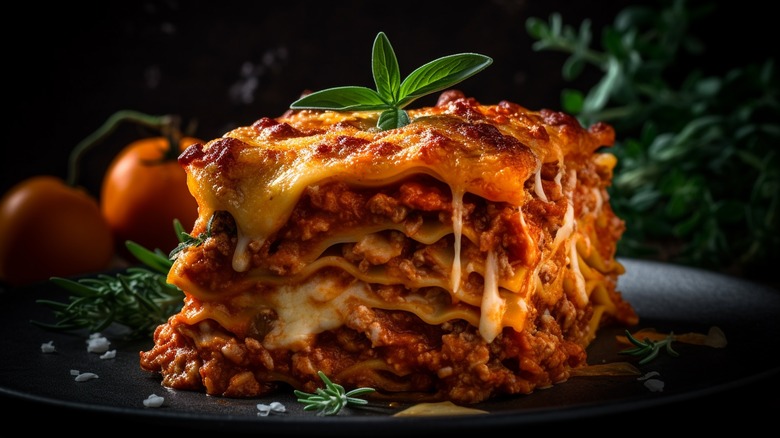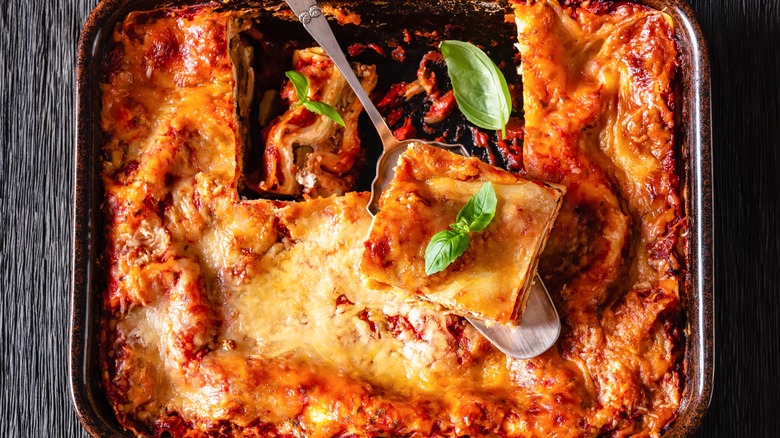A Chef Explains Why You Should Always Use Low-Moisture Mozzarella In Your Lasagna
Cutting into a tray of lasagna and pulling out a square is one of the most enticing sights you'll get as a cheese lover. Raise a slice of lasagna toward your plate, and you'll see the perfect combination of stretchy, melty mozzarella, salty parmesan, and creamy béchamel or ricotta, giving you everything you could possibly want. You can debate between Bolognese, mushroom, or any other great lasagna recipes, but no matter which one you choose, the cheese is what you're really coming for. So, what is the saddest sight when you cut into your lasagna? Not getting gooey, creamy cheese, but instead a soupy mess that runs out onto your plate. That's why Tasting Table spoke to Jasper J. Mirabile Jr., the owner and chef at Jasper's Restaurant in Kansas City, Missouri, and the host of Live! From Jasper's Kitchen Radio, for an explanation on which cheese you should use and avoid for the best lasagna.
For Mirabile Jr., the real pitfall in lasagna has to do with which mozzarella you use. He tells us that you should stick with low-moisture mozzarella. According to him, fresh mozzarella "tastes fantastic and it melts just perfect, but low-moisture mozzarella is much better when baking because it does not make the lasagna watery. There's a big difference." It can be hard to resist the appeal of using fresh mozzarella, but it turns out lasagna is one of those recipes where fresh isn't actually better.
Low-moisture mozzarella prevents lasagna from getting too watery
Depending on the recipe, mozzarella may be layered into the middle of the lasagna as well as on top, meaning fresh mozzarella is going to leak a lot of moisture throughout the dish since it's usually 60% or more water by weight. Jasper J. Mirabile Jr. does make one possible exception for the low-moisture over fresh rule, but with some clear caveats, saying, "I prefer to sneak a few slices [of fresh mozzarella] on top of the lasagna the last 10 minutes of baking, but never in the layers of lasagna." Fresh mozzarella on top of your lasagna will still release water, but being more exposed to the direct heat of the oven helps cook off the moisture before it messes with the dish, leading to a nice mixture of mozzarella textures.
If you are unsure about distinguishing mozzarella, low-moisture is the variety that is packed in tight plastic, as opposed to fresh mozzarella, which is typically packed in water. There are both full-fat and part-skim varieties of low-moisture mozzarella, and while full-fat may have a little more flavor, both should work well in lasagna. Just make sure you avoid pre-shredded bags of cheese. Pre-shredded mozzarella has cellulose added to prevent clumping, but this also prevents it from melting well, and pre-shredded cheese loses flavor through exposure to oxygen, even when sealed. So, listen to Mirabile Jr. and stick to low-moisture mozzarella for lasagna, and take the extra minute to grate it yourself.

